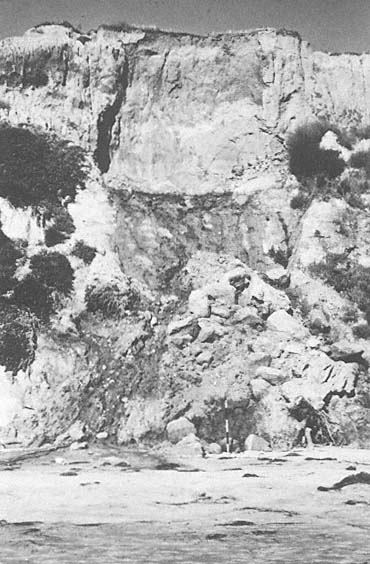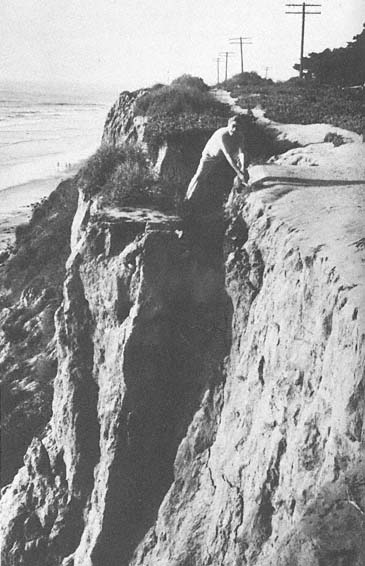Threat to the Railroad Along the Cliff and General Changes
Prior to 1900, the Santa Fe Railroad line was placed a block inland from the bluff. In 1910, the railroad relocated the route seaward because the grade inland was too steep and because the rail company wanted to accommodate the growing city of Del Mar (Atcheson, Topeka, and Santa Fe Railway Co. 1978). To create a more level right-of-way, the bluffs were steam-shoveled and dynamited (fig. 61). Since then three trains have crashed to the beach, as the cliffs have been undercut by waves and by runoff from streets ending at the bluff, as well as by increasing subsurface groundwater pressures. The most recent train derailment occurred on 1 January 1941 when the bluff collapsed. This specific location in Del Mar is particularly susceptible to erosion, as surface water,

Figure 62a
August 1979 view of the cliff collapse at Del Mar. Note that this
failure was a direct result of subaerial erosion (groundwater sources
inland of the sea cliff) and not wave erosion.
Photo : G. Kuhn.

Figure 62b
September 1979 view along the bluff top at Del Mar. Note that the
block in the foreground has partially separated from the cliff face.
Photo : G. Kuhn.
especially during the wet years, flows directly down the street end, ponds east of the tracks, and then exits the cliff face atop impermeable clay layers. In 1978, during the January storms, this site collapsed, and the bluff face had to be stabilized again landward; subsequently the tracks were relocated still farther inland.